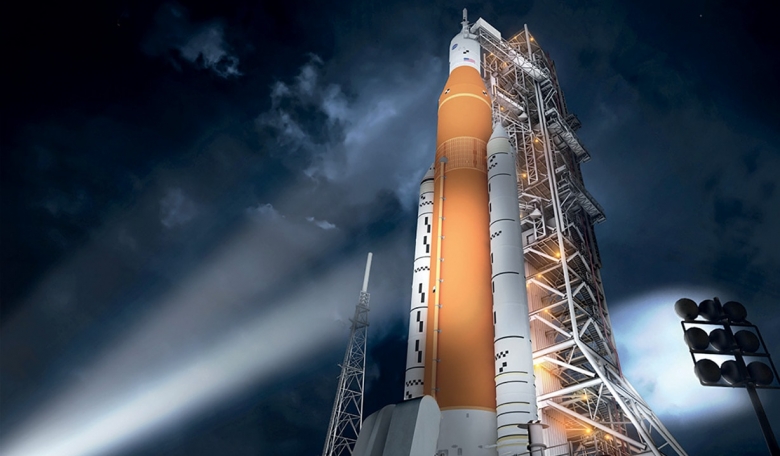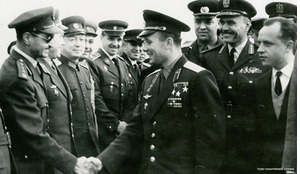The Space Launch System (SLS) is NASA’s new super heavy-lift launch vehicle. Designed to return America’s human spaceflight programme to deep space, it will provide unparalleled mass, volume and departure energy to help propel nearly any payload to nearly any destination. As part of a new deep space exploration system that includes revamped launch facilities at Kennedy Space Center (KSC) and the Orion spacecraft that will take astronauts farther into space than any humans have ever ventured, SLS is designed to be flexible and evolvable. The massive ‘Saturn V-sized’ rocket is currently under construction all over the United States, with structural fabrication of major components complete and the focus now on final outfitting for first flight.
SLS represents a game-changing spaceflight capability, enabling mission profiles that are currently impossible to become possible. Conceived and designed for exploration of deep space, the primary purpose of SLS is to enable NASA’s journey to Mars and propel humans beyond low Earth orbit for the first time in almost half a century.
The initial configuration of SLS - Block 1 - will be capable of delivering more than 70 metric tons of payload to low Earth orbit (LEO) and will send NASA’s new Orion crew vehicle into lunar orbit on the deep space exploration system’s first mission, Exploration Mission-1 (EM-1), scheduled for 2019.
Largely a test flight, EM-1 will verify and validate new systems and operations and provide valuable data before astronauts fly on the second mission, Exploration Mission-2 (EM-2) in the early 2020s. EM-1 will also provide an opportunity for 13 CubeSat secondary payloads to be deployed in deep space, where they will perform a variety of scientific experiments.
Find out more about NASA's SLS launch vehicle and plans for future deep space exploration in the full version of this article, available now to our subscribers.














